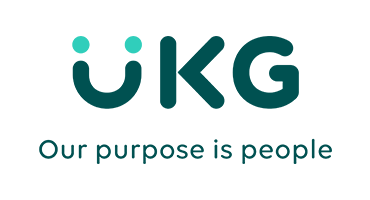Ding—another email just arrived in your inbox. Ping—and now a Slack. Ring—there goes another meeting invitation. Everyone knows the feeling of that constant influx of quick questions, status updates and small requests that comes through on a daily basis.
In fact, according to a 2023 Asana Anatomy of Work study, workers switch between an average of 10 apps per day, and 62% of the workday is lost to repetitive, mundane tasks.
Many industries are beginning to turn to artificial intelligence as a way to simplify the busy workday and help their employees better prioritize and focus. The HR and recruiting sectors are particularly well positioned to benefit from AI, which has the power to facilitate the finding and hiring of new employees, and help them more effectively navigate employer benefits and enrichment offerings once they are on board.
Automate away the drudgery
In today’s ever-changing job market, finding a large pool of candidates simply isn’t enough. It’s all about finding the right person for each specific role and ensuring they are equipped with the tools necessary to thrive in that position. When talent acquisition specialists are constantly flipping through a range of software and systems to track applications, they miss out on precious hours that could be spent doing what they do best: assessing the personal strengths of each candidate.
Automating repetitive aspects of work opens the door to enhanced productivity and allows more time for attention to interpersonal details and experiences. AI can also help in the sequencing of simple activities. Instead of manually uploading each job listing to a variety of sites and scheduling (then often re-scheduling) multiple interviews, for instance, imagine those tasks automated.
If all that remained was the most important task of interacting with each candidate, it would result in a more efficient, and effective, process for all involved. Utilizing AI to cut down on the extra, more mundane stresses that exist in hiring is exactly how recruitment teams can unlock their own (as well as their company’s and candidates’) true potential.
Perhaps the best part of adapting AI, besides staying on top of hiring trends, is the seamless integration it can have into existing investments. Most companies already have large HR software suites that they aren’t looking to change. In most cases, AI can be layered on top of such suites as a helpful addition, rather than replacement. It can then work itself into each individual application that exists in the suite and simplify its use.
Such technology can be used throughout an employee’s entire lifecycle to create the most value. For instance, offering workers an AI digital assistant that sends documents such as referral forms or answers basic HR questions about topics like firm holidays can increase speed and ease with which employees access information. The employee quickly gets the answers they need, while the HR team can direct its attention toward higher-value work.
Easing HR-related tasks for employees is also a major step toward improving a company’s retention rate. The ultimate goal of making a new hire is having that person remain on the team for years to come. By automating standard business processes—such as sending emails, scheduling meetings, procuring approvals and guiding employees throughout signature moments of their careers like onboarding, promotion tracks and career progression—AI can help companies empower, engage and retain their employees for the long-term.
Build trust with ethics at the forefront in AI adoption
There’s so much to think about when it comes to introducing such technology into the workplace. First and foremost, it must be done in an ethical way that prioritizes both applicants and existing employees. Keeping humans in the driver’s seat is the most crucial aspect of AI’s long-term success. It’s all about findings ways to leverage automation informed by employee knowledge and expertise.
See also: In the AI revolution, 3 ways to put your employees first
The thought of introducing AI into the workplace can bring with it a degree of uncertainty. This is a recurring theme when businesses consider the best way to adopt a new technology. Decades ago, there were concerns the internet would be more of a distraction than a benefit.
And when the first iPhone came out in 2007, it was as if someone had opened a portal into the future. Without any formal training, people suddenly were granted access to an entirely new world of information sharing. Sound familiar?
Just like with web access and smartphones, it’s normal for people to feel apprehensive about AI, because it is so new. But with more experience, even just through experimenting with intuitive programs like ChatGPT, comes a deeper understanding and appreciation of how such technology can become a benefit.
As AI weaves its way into the fabric of HR, it’s also important to keep an eye on how the technology is being regulated to ensure it doesn’t introduce bias. In early July, for example, New York City’s Local Law 144 went into effect, regulating the use of Automated Employment Decision Tools. Mandatory bias audits can ensure that technology is not the sole deciding factor in someone’s employment, and that people from all backgrounds are given fair treatment in the application process.
When I look at the future of HR and recruiting, I feel a sense of excitement. There is something magical about connecting employers and employees in such a meaningful way. AI creates a world where only the most important messages are sent and only the most urgent questions are asked, leading to more productive conversations across all workplaces. When the right people are placed in the right roles—and are happy in their respective companies—the sky is truly the limit.
The post Why—and how—HR can lead organizations in AI adoption appeared first on HR Executive.
Credit: Source link











